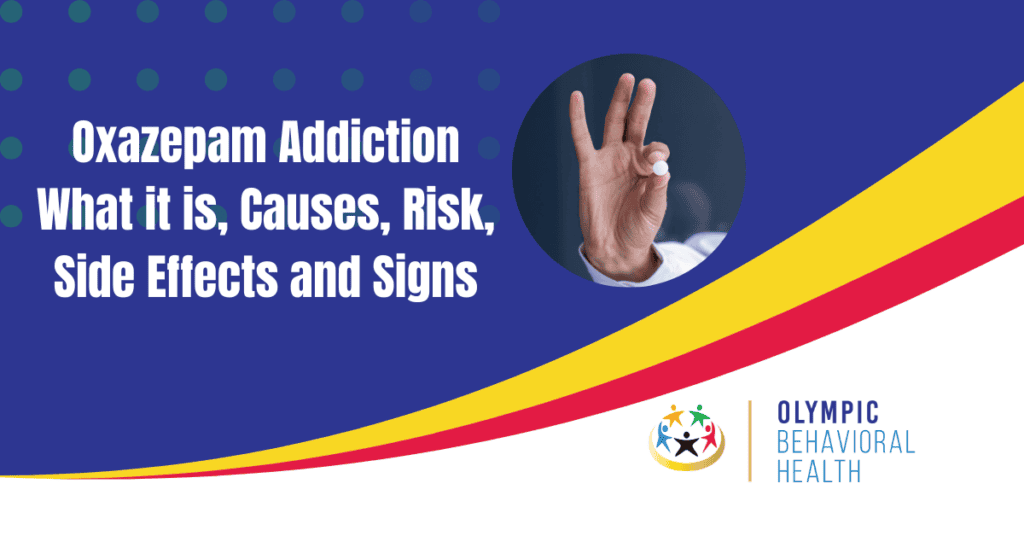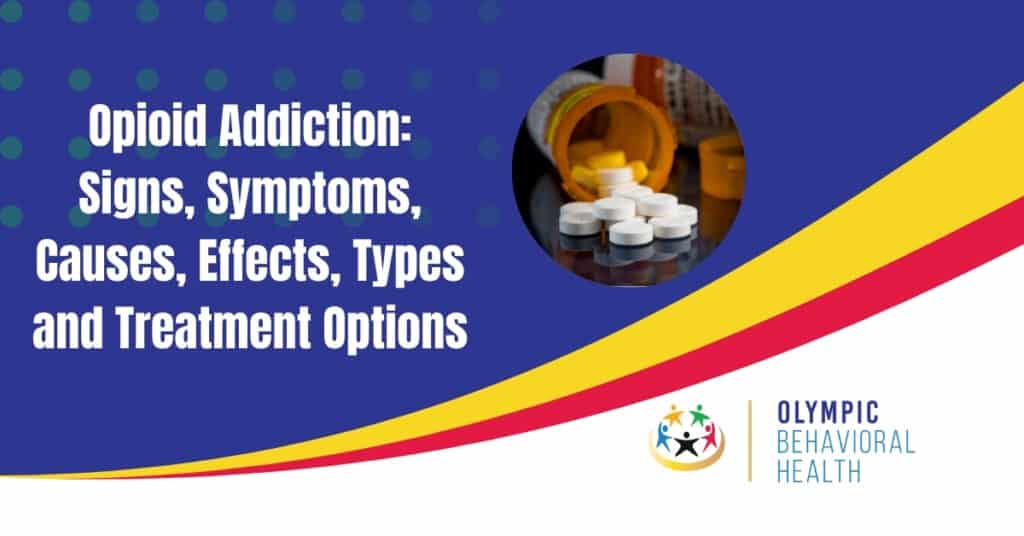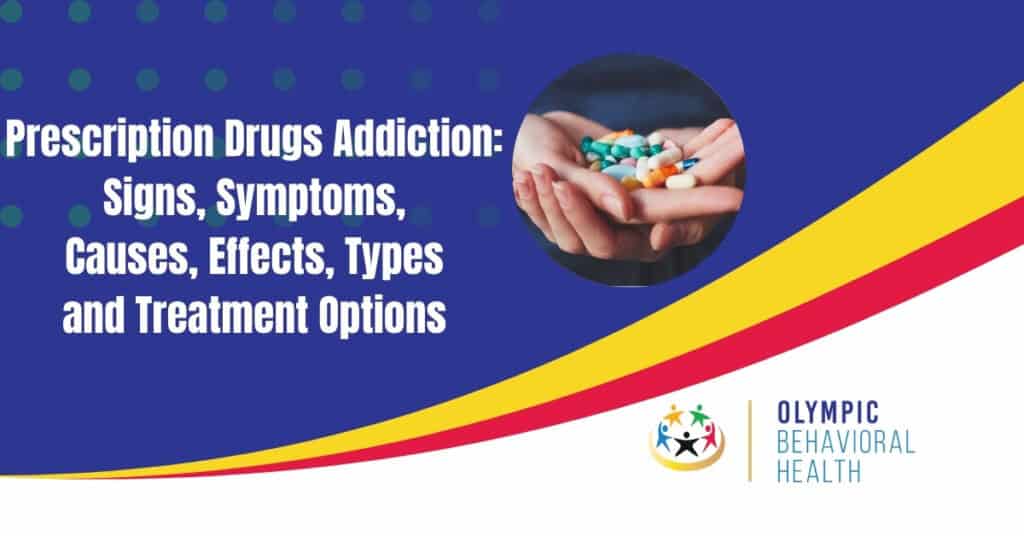Oxazepam, a benzodiazepine medication, is commonly prescribed for the treatment of anxiety disorders and alcohol withdrawal symptoms. While it is an effective medication when used as prescribed, oxazepam carries the risk of addiction and various side effects. Understanding the potential dangers associated with oxazepam misuse is crucial in order to ensure safe and responsible usage. In this article, we will explore the risks, signs of addiction, and side effects of oxazepam, as well as provide synonyms to describe this important topic.
What is Oxazepam?
Oxazepam is a benzodiazepine medication that is commonly prescribed for short-term use due to its short-acting nature.
So, what is oxazepam? Well, it is a medication used to treat anxiety and insomnia. It works by enhancing the effects of gamma-aminobutyric acid (GABA), which is a natural chemical in the brain that helps to calm the nervous system. Unlike other benzodiazepines, oxazepam is quickly eliminated from the body because it has a short half-life.
To ensure the safe use of oxazepam, it is important to follow the prescribed dosage and duration given by a healthcare professional. The dosage may vary depending on factors such as age, medical condition, and response to treatment. It is essential not to exceed the recommended dose or use oxazepam for a longer period than prescribed to prevent the development of dependency and potential side effects.
Common side effects of oxazepam may include drowsiness, dizziness, confusion, blurred vision, and unsteadiness. Although rare, there is a possibility of experiencing severe allergic reactions or paradoxical reactions such as increased anxiety or agitation. If any unusual or severe side effects occur, it is important to inform a healthcare professional immediately.
Certain circumstances may prohibit the use of oxazepam. These include pregnancy, breastfeeding, or having allergies to benzodiazepines. Additionally, individuals with a history of substance abuse or severe respiratory problems are not recommended to use oxazepam.
So, now you know what oxazepam is and how it is commonly used to treat anxiety and insomnia during short-term periods.
Understanding Oxazepam Addiction
Understanding oxazepam addiction is vital for those prescribed or considering this medication. Here are key points to know:
1. Oxazepam is a benzodiazepine prescribed for anxiety, insomnia, and alcohol withdrawal symptoms.
2. It slows brain activity, producing a calming effect.
3. While effective for these conditions, it carries addiction risks.
4. Regular use leads to physical dependence and withdrawal symptoms if abruptly stopped.
5. Psychological dependence can also occur, with individuals relying on it for coping.
6. Tolerance can develop, requiring higher doses for the same effect.
7. Factors increasing the likelihood of addiction include substance abuse history, family addiction history, and co-occurring mental health disorders.
8. It’s crucial to follow healthcare professional guidance when taking and tapering oxazepam.
9. Seeking help from a healthcare professional if addiction is suspected is crucial for guidance and support in recovery.
John, a 32-year-old man, took oxazepam for generalized anxiety disorder. Initially, it relieved his symptoms, but he needed higher doses for the same effect due to developing tolerance.
John became dependent on oxazepam and struggled to cope without it. Withdrawal symptoms reinforced his reliance on the drug. He recognized his addiction and sought help.
With support from his healthcare provider and a treatment program, John safely detoxed from oxazepam. Therapy and other interventions taught him healthy coping mechanisms for anxiety management. Despite challenges, John’s commitment to recovery led to freedom from oxazepam addiction and regained control of his life.
What Causes Oxazepam Addiction?
Oxazepam addiction can be caused by various factors that contribute to dependency on this medication. Understanding the causes is important to prevent and address addiction effectively.
1. Self-medication: Misuse of Oxazepam as self-medication for stress, anxiety, or mental health issues without medical guidance can cause addiction.
2. Genetics: Genetic factors can also contribute to Oxazepam addiction, making some individuals more susceptible to becoming addicted.
3. Co-occurring disorders: People with anxiety or depression are at increased risk of Oxazepam addiction. Using the medication to relieve symptoms can lead to dependence over time.
4. Environmental factors: Family history of addiction, exposure to substance abuse, peer pressure, and easy access to Oxazepam can contribute to addiction.
5. Long-term use: Prolonged and frequent use of Oxazepam can lead to addiction. Increased tolerance requires higher doses for desired effects, increasing the risk of dependence.
It is important to note that not everyone who uses Oxazepam will develop addiction. However, these factors can increase the likelihood. Understanding the causes helps individuals, healthcare professionals, and families take preventative measures and provide appropriate support.
Sarah, a young woman in her mid-20s, developed an addiction to Oxazepam. Struggling with anxiety, she found relief in the medication’s calming effects. As her anxiety worsened, she took larger doses without medical supervision, becoming dependent.
Sarah’s addiction was fueled by her family history of substance abuse and the easy availability of Oxazepam. Recognizing the signs, her family intervened and helped her seek professional help. Through detoxification, rehabilitation, and therapy, Sarah overcame her addiction.
Sarah’s story highlights the importance of understanding the causes of oxazepam addiction and side effects and the critical role of early intervention and support. Addressing underlying factors and providing treatment allows individuals to regain control and move towards a healthier, substance-free future.
Who is at Risk for Oxazepam Addiction?
It is important to understand the factors that can increase an individual’s susceptibility to developing an addiction to Oxazepam. Certain groups may be at a higher risk.
– Individuals with a history of substance abuse: Those who have struggled with addiction in the past may be more prone to developing an addiction to Oxazepam. This is because their brain chemistry and reward systems may already be altered, making them more susceptible to the addictive effects of the medication.
– People with mental health disorders: Individuals diagnosed with anxiety, depression, or insomnia are more likely to be prescribed Oxazepam. These conditions can increase vulnerability to dependence and addiction to this medication.
– Those who misuse or abuse other drugs: People who misuse or abuse other substances, including prescription medications or illicit drugs, are more likely to be at risk for Oxazepam addiction. This behavior indicates a pattern of substance abuse that can make them more susceptible to developing an addiction to Oxazepam as well.
– Individuals with a genetic predisposition: Some individuals may have a genetic predisposition to addiction. If there is a family history of substance abuse or addiction, it increases the likelihood that an individual may also struggle with addiction to Oxazepam.
– People with a lack of social support: Having a strong support system is crucial in preventing and overcoming addiction. Individuals who lack social support networks are more vulnerable to developing an addiction to Oxazepam as they may lack the necessary resources and guidance to seek help.
It is essential to recognize the potential risks and take appropriate precautions when using Oxazepam. Healthcare providers can tailor treatment plans and closely monitor individuals at risk to minimize the likelihood of addiction developing.
John’s struggle with Oxazepam addiction began when he was prescribed the medication for anxiety. With a family history of substance abuse, he was at a higher risk for developing addiction. Over time, John relied on the medication to cope with daily life, gradually increasing his dosage without medical guidance. His misuse of Oxazepam led to a severe addiction, impacting his relationships, work performance, and overall well-being. Recognizing the signs and symptoms of addiction, John sought help through medical detoxification and inpatient rehabilitation. With the support of professionals and loved ones, John successfully recovered from his Oxazepam addiction, learned healthier coping mechanisms, and now advocates for safe usage and monitoring of prescription medication to prevent others from experiencing the same hardships.
Common Side Effects of Oxazepam
Dealing with the side effects of oxazepam? Let’s uncover the common ones to watch out for. From physical discomfort to psychological impact, we’ll explore the different realms affected by oxazepam use. Brace yourself for a journey through the potential physical and psychological side effects that this medication may bring. Stay informed, as knowledge is the first step towards better understanding and managing the potential challenges that may arise.
Physical Side Effects of Oxazepam
Physical Side Effects of Oxazepam
Oxazepam, a benzodiazepine medication, can cause physical side effects. It is important to know about these effects for informed decision-making.
The side effects of oxazepam may include drowsiness, dizziness, and reduced coordination. These effects can impair the ability to perform tasks requiring focus and precision. Avoid driving or operating heavy machinery while under the influence of oxazepam.
In some cases, oxazepam can also cause headaches and muscle weakness. The intensity of these side effects varies depending on the individual and dosage. Monitor these symptoms to ensure tolerability.
Dry mouth is another side effect of oxazepam, which can cause discomfort and difficulty in speaking or swallowing. Good oral hygiene and staying hydrated can alleviate this side effect.
In rare cases, oxazepam may cause an allergic reaction, resulting in symptoms like skin rash, itching, or swelling. Seek immediate medical attention if signs of an allergic reaction occur.
The severity and occurrence of physical side effects can vary among individuals. Age, overall health, and dosage are factors that influence the response to the medication.
To minimize the risk of physical side effects, follow the prescribed dosage and consult a healthcare professional with any concerns. They can provide guidance and adjust the treatment plan accordingly. Regular communication with the healthcare provider is vital for effectiveness and managing side effects.
Stressing over psychological side effects of Oxazepam? Don’t worry, you’ll be mentally conflicted AND physically exhausted!
Psychological Side Effects of Oxazepam
Psychological side effects of Oxazepam, such as drowsiness, confusion, difficulty concentrating, mood changes (increased anxiety or irritability), memory problems, impaired judgment, hallucinations, delusions, dependence, and addiction, can have a significant impact on well-being and cognitive functioning. It is essential to properly manage and monitor the usage of Oxazepam to minimize the risk of experiencing these adverse effects. If concerning symptoms arise, it is important to seek medical guidance. Individuals with a history of mental health conditions may be more susceptible to these side effects. When discontinuing Oxazepam, it is crucial to follow a tapering schedule under medical supervision to prevent withdrawal symptoms. Seeking professional help is crucial for appropriate management and support in addressing these psychological side effects of Oxazepam.
Long-Term Effects of Oxazepam Addiction
Oxazepam addiction has detrimental long-term effects on both physical and mental health. It is important to be aware of the main effects associated with oxazepam addiction. Here are the effects:
- Physical health deterioration: Prolonged use of oxazepam can result in various health issues, such as a weakened immune system, respiratory problems, and liver damage. Misusing oxazepam also increases the risk of developing heart disease and high blood pressure.
- Cognitive impairment: Chronic oxazepam addiction significantly impacts cognitive function. Common long-term effects include memory loss, difficulty concentrating, and impaired judgment. These impairments greatly affect daily activities, relationships, and employment.
- Mental health disorders: Long-term oxazepam addiction contributes to the development or worsening of mental health disorders like anxiety and depression. Due to the addictive nature of oxazepam, there may also be mood swings and changes in behavior.
- Social and interpersonal issues: Oxazepam addiction strains relationships with family, friends, and colleagues. Continued drug abuse leads to isolation, withdrawal from social activities, and can even result in legal problems. The impact of addiction on personal relationships can be significant and lasting.
- Reliance and tolerance: Over time, individuals who abuse oxazepam develop tolerance and require higher doses to achieve the desired effects. This increased tolerance raises the risk of overdose and other complications.
It is crucial to seek professional help for oxazepam addiction. There are various treatment options available, including therapy, support groups, and medication-assisted therapies, which can effectively manage the long-term effects of addiction and aid in recovery.
Remember that with the right support, recovery is possible. Reach out to healthcare professionals, addiction specialists, or helpline services to overcome oxazepam addiction and regain control of your life.
Recognizing Signs and Symptoms of Oxazepam Addiction
Recognizing Signs and Symptoms of Oxazepam Addiction
Oxazepam addiction can harm well-being and daily functioning. Recognizing signs and symptoms is crucial for timely intervention. Key indicators include:
1. Increased tolerance: Addicted individuals require higher doses for desired effects, often taking larger quantities without medical justification.
2. Withdrawal symptoms: When reducing or stopping oxazepam use, individuals may experience anxiety, restlessness, irritability, insomnia, and seizures. Severity varies based on addiction extent.
3. Neglecting responsibilities: Addicted individuals prioritize obtaining and using the drug over personal and professional duties, neglecting work, studies, relationships, etc.
4. Increased secrecy: Addicted individuals engage in secretive behaviors to hide drug use, hiding pill bottles, making excuses, or isolating from family and friends.
5. Financial difficulties: Sustaining an oxazepam addiction is expensive, leading to financial strain. Addicted individuals may borrow money, sell personal belongings, or engage in illegal activities.
6. Neglecting self-care: Individuals addicted to oxazepam neglect personal hygiene, nutrition, and overall well-being. They may appear disheveled, experience weight fluctuations, or decline in physical health.
7. Social and interpersonal problems: Oxazepam addiction strains relationships, causing conflicts with family, friends, and colleagues. Addicted individuals become isolated, lose interest in activities, and exhibit changes in behavior and mood.
Recognizing signs and symptoms is the first step toward helping individuals seek support and treatment. Approach them with empathy, provide resources for professional help, and encourage treatment from addiction specialists. Early intervention makes a significant difference in recovery.
Getting Help for Oxazepam Addiction
If you or someone you know is grappling with oxazepam addiction, getting the right help is crucial. In this section, we’ll explore the different avenues for seeking assistance. From medical detoxification to inpatient and outpatient rehabilitation, each sub-section offers unique approaches to support individuals on their journey to recovery. Let’s dive into the options and discover how they can provide the necessary guidance and care needed to overcome oxazepam addiction.
Medical Detoxification
Medical detoxification, also known as medical detox, plays a vital role in the treatment process for oxazepam addiction. It is a necessary step that focuses on safely and effectively removing the drug from the individual’s body. Within the realm of medical detoxification, several important aspects come into play:
1. Assessment: Prior to starting the detoxification process, it is crucial for a healthcare professional to perform a thorough assessment of the individual’s overall health and the extent of their addiction. This assessment helps determine the most appropriate detox plan for their specific needs.
2. Medical supervision: During medical detoxification, it is of utmost importance to have addiction medicine specialists closely supervise the entire process. These specialists are well-equipped to monitor the individual’s vital signs, manage any potential withdrawal symptoms, and provide any required medical interventions.
3. Tapering off: To minimize the severity of withdrawal symptoms and allow the body to adapt to decreasing levels of the drug, the dosage of oxazepam is gradually reduced throughout the detoxification process.
4. Managing withdrawal symptoms: Medical detoxification is designed to provide effective interventions that alleviate discomfort experienced during withdrawal. In some cases, medications may be prescribed to manage symptoms like anxiety, insomnia, and seizures.
5. Duration: The length of time required for medical detoxification can vary based on factors such as the level of addiction and overall health of the individual. It can span from several days to a couple of weeks.
6. Psychosocial support: In addition to medical detoxification, individuals are strongly encouraged to engage in therapy and counseling sessions that address the psychological and emotional aspects of their addiction. This comprehensive support aids in preventing relapse and fosters long-term recovery.
7. Transition to further treatment: It is important to recognize that medical detoxification is just the initial step in the treatment of oxazepam addiction. Following detoxification, individuals should continue with additional forms of treatment, such as inpatient or outpatient rehabilitation. These treatments aim to address the underlying causes of addiction and help individuals develop strategies for relapse prevention.
Medical detoxification serves as a crucial component in the comprehensive approach to treating oxazepam addiction. It creates a safe and supportive environment for individuals to overcome withdrawal symptoms and embark on their journey towards recovery.
Who needs a vacation when you can check into inpatient rehab and experience the ultimate getaway from reality?
Inpatient Rehabilitation
Inpatient rehabilitation is crucial for oxazepam addiction. Here are important considerations for inpatient rehabilitation:
1. Inpatient rehabilitation offers structured and supervised care for individuals with oxazepam addiction. This ensures round-the-clock support, especially for severe addiction.
2. During inpatient rehabilitation, patients receive a comprehensive assessment to determine the right treatment plan. This includes medical and psychological evaluations and understanding their addiction history.
3. Inpatient rehabilitation programs provide evidence-based therapies for oxazepam addiction. These may include individual counseling, group therapy, family therapy, and cognitive-behavioral therapy. They aim to address addiction causes and develop healthy coping mechanisms.
4. The duration of inpatient rehabilitation varies based on individual needs and progress. Programs usually range from 28 to 90 days, but can be longer for those requiring more support.
5. Inpatient rehabilitation offers medical detoxification for oxazepam withdrawal symptoms. Medical professionals closely monitor and manage symptoms for a safe detox process.
6. Inpatient rehabilitation facilities provide aftercare planning to support transition back to everyday life. This may involve referrals to outpatient therapy, support groups, or ongoing counseling for long-term recovery.
7. Success in inpatient rehabilitation depends on individual commitment and participation. Active engagement in therapy, adherence to treatment plans, and ongoing support are vital for lasting recovery.
Choosing inpatient rehabilitation greatly increases the chances of overcoming oxazepam addiction. The structured environment, evidence-based therapies, and comprehensive support in these programs provide the tools to break free from addiction and cultivate a healthier future.
Remember, seeking help and undergoing inpatient rehabilitation is an important step towards recovery. If you or a loved one is struggling with oxazepam addiction, reach out for support.
Outpatient Rehabilitation: Because your addiction doesn’t need an overnight stay, just a relentless commitment to recovery.
Outpatient Rehabilitation
Outpatient rehabilitation is a crucial component of treating oxazepam addiction. It offers specialized care and support while allowing individuals to maintain their daily routines. When considering outpatient rehabilitation for oxazepam addiction, there are several important aspects to take into account:
1. Individualized Treatment: Outpatient rehabilitation programs are specifically tailored to meet the unique needs of each person. This involves considering the severity of the addiction, medical history, and personal circumstances.
2. Therapy and Counseling: Outpatient rehabilitation utilizes cognitive-behavioral therapy (CBT) to address triggers and behaviors associated with oxazepam addiction. Additionally, group therapy provides a supportive environment for individuals to share experiences and learn from one another.
3. Medication Management: In certain cases, medication-assisted treatment may be used to help manage withdrawal symptoms or cravings. Healthcare professionals closely monitor the use of medication.
4. Supportive Services: Outpatient rehabilitation programs offer additional services like family therapy and education on coping mechanisms and relapse prevention.
5. Flexibility and Convenience: The flexibility of outpatient rehabilitation allows individuals to attend treatment sessions while still fulfilling their daily responsibilities such as work, school, or family commitments.
6. Accountability and Monitoring: Regular check-ins and drug testing are part of outpatient rehabilitation to ensure compliance with the treatment plan and provide accountability.
7. Continued Support: Outpatient rehabilitation includes aftercare services such as ongoing therapy and support group meetings. These resources are designed to help individuals maintain their sobriety and prevent relapse.
Outpatient rehabilitation for oxazepam addiction takes a comprehensive approach to treatment while allowing individuals to maintain their daily routines. It provides the necessary tools, support, and guidance for lasting recovery.
Preventing Oxazepam Addiction
Preventing oxazepam addiction is crucial for ensuring a healthy and safe use of the medication. In this section, we will explore two key aspects: safe usage and monitoring, as well as proper disposal of the medication. By understanding how to responsibly handle oxazepam, we can proactively strive towards preventing addiction and minimizing any potential negative side effects. Let’s dive into these important practices to promote the well-being of individuals using this medication.
Safe Usage and Monitoring
Safe usage and monitoring of oxazepam is crucial to prevent addiction and ensure individuals’ well-being. Here are some important considerations:
1. Follow the prescribed dosage: It is essential to take oxazepam exactly as prescribed to maintain safe usage. It is important not to exceed the recommended dose or duration.
2. Take it at the same time each day: Establishing a regular schedule is vital for monitoring and maintaining consistent levels of the medication in the body. This practice improves the effectiveness of oxazepam while minimizing adverse effects.
3. Avoid alcohol and sedatives: Combining oxazepam with these substances can have dangerous consequences. It intensifies sedative effects, impairs coordination and cognitive function, and increases the risk of overdose. It is crucial to prioritize safe usage by refraining from the consumption of alcohol and sedatives.
4. Inform your healthcare provider: To ensure safe usage and monitoring, it is important to keep your healthcare provider informed about all medications you are taking. This includes over-the-counter medications, herbal supplements, and other prescription drugs that may interact with oxazepam, affecting its efficacy or increasing the risk of side effects.
5. Regularly evaluate the need for the medication: It is advisable to discuss with your healthcare provider if there are any alternative, non-addictive treatment options available. Oxazepam is generally prescribed for short-term use due to its addiction potential. Regular evaluation of the need for the medication helps promote safe usage.
6. Store the medication safely: As part of safe usage and monitoring, it is essential to store oxazepam in a secure location. Keep it away from children, pets, and individuals who might misuse it. Additionally, it is important to dispose of any unused medication as advised by local guidelines.
7. Monitor for side effects: Close monitoring of oxazepam usage includes paying attention to any changes in mood, behavior, or physical symptoms. If any concerning side effects are experienced, it is crucial to report them to your healthcare provider immediately.
Fact: According to a study published in the Journal of Clinical Psychopharmacology, regular monitoring of patients on oxazepam treatment can help identify early signs of addiction and facilitate timely intervention for better outcomes. Therefore, safe usage and monitoring play a significant role in ensuring the well-being of individuals using oxazepam.
Proper Disposal of Medication
Proper disposal of medication is crucial for ensuring safety and protecting the environment. To accomplish this, it is important to follow these steps for proper disposal:
- Always refer to the medication label or package insert for disposal instructions provided by the manufacturer.
- If you have any doubts or questions about disposal, consult your healthcare provider or pharmacist for guidance.
- Avoid flushing medication down the toilet or drain, unless specific instructions permit it. Flushing can harm water sources and pose a threat to aquatic life.
- Prior to disposal, remove any personal information from the medication packaging to safeguard your privacy.
- If available in your community, consider participating in a drug take-back program as they provide safe methods for disposing of unused medications.
- In the absence of a drug take-back program, you can dispose of most medications in your household trash by following these steps:
- Take the medication out of its original container and mix it with an undesirable substance such as used coffee grounds or kitty litter. This will make it less attractive to children, pets, and individuals who might seek drugs.
- Place the mixture in a sealable bag, empty can, or another container to prevent any leakage.
- Remove or conceal any personal information from the original medication container before discarding it in the trash.
- It is essential not to share prescription medications with others, as it can lead to adverse effects without proper medical guidance.
- Be aware that certain medications, such as opioids and narcotics, have specific disposal requirements due to the risk of misuse. To learn about specialized disposal methods for these medications, reach out to your local pharmacy or law enforcement agency.
Proper disposal of medication not only helps prevent accidental ingestion and reduces the risk of misuse but also plays a vital role in protecting the environment from contamination. By following these steps, you actively contribute to creating a safer and healthier community.
Can other medications also cause Addiction?
Yes, let’s have a look at some:
Can Valium cause Addiction?
Yes, Valium (diazepam) is a benzodiazepine medication similar to oxazepam and can also cause addiction. Both drugs work by enhancing the effects of a chemical called GABA in the brain, which helps to calm and relax the body.
When used for an extended period of time or at high doses, Valium can lead to physical and psychological dependence. Some potential signs of Valium addiction include an inability to stop using the drug, continued use despite negative consequences, and feelings of withdrawal without the drug.
As with any medication, it is important to use Valium as prescribed and to talk to a doctor if there are concerns or if addiction is suspected. To learn more about Valium addiction, you can read our article on it.
Can Halcion cause Addiction?
Yes, Halcion, also known by its generic name triazolam, can cause addiction. Halcion is a benzodiazepine medication, similar to oxazepam, that is commonly prescribed for the treatment of anxiety and insomnia. Like other benzodiazepines,
Halcion can be habit-forming and can lead to physical and psychological dependence. This is especially true if the medication is used for a prolonged period of time or in higher doses than prescribed. If you or a loved one is struggling with Halcion addiction, it is important to seek professional help to safely manage withdrawal symptoms and develop a plan for recovery.
For more information on Halcion addiction and treatment options, read our article.
Get help for your Benzo Addiction
Finding help for your Benzo addiction can be challenging, but taking the first step is crucial. Our facility is here to support you through this difficult journey. By reaching out and seeking help, you are opening the door to a healthier, happier life. Let us guide you towards recovery.
Share This Post



